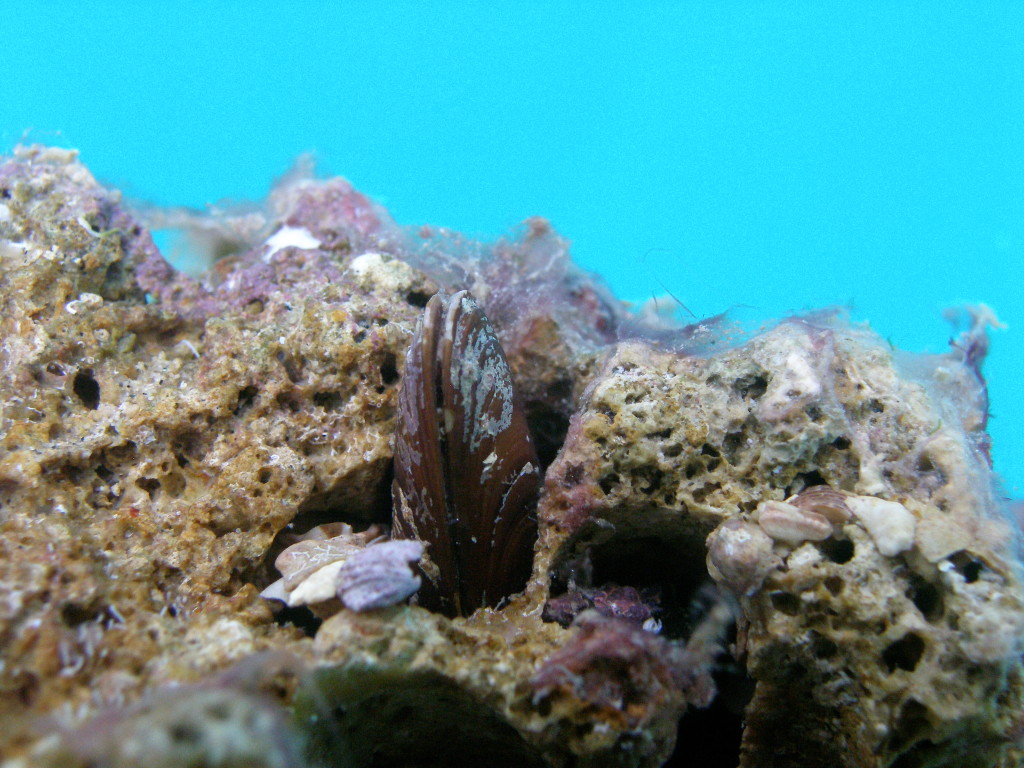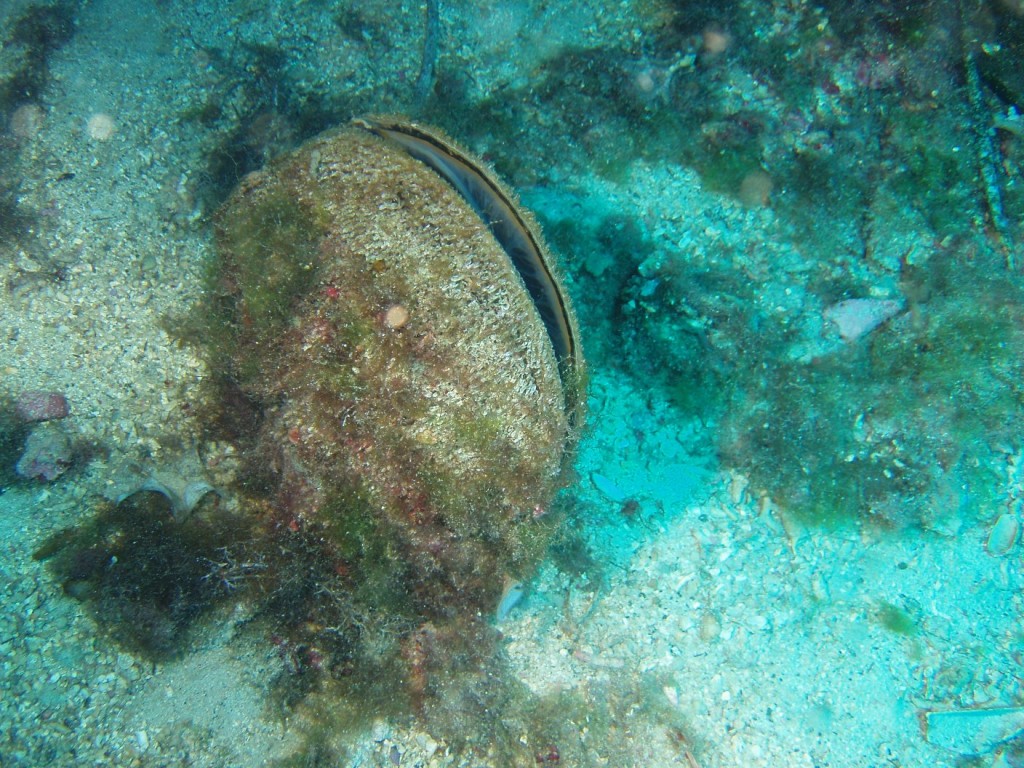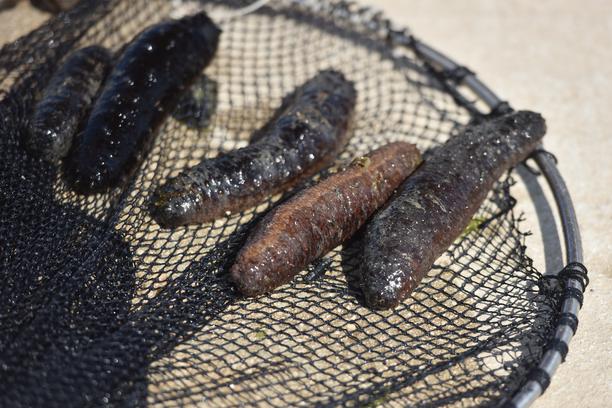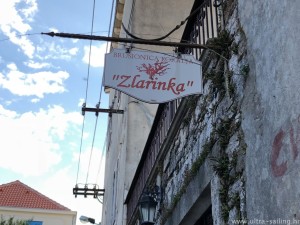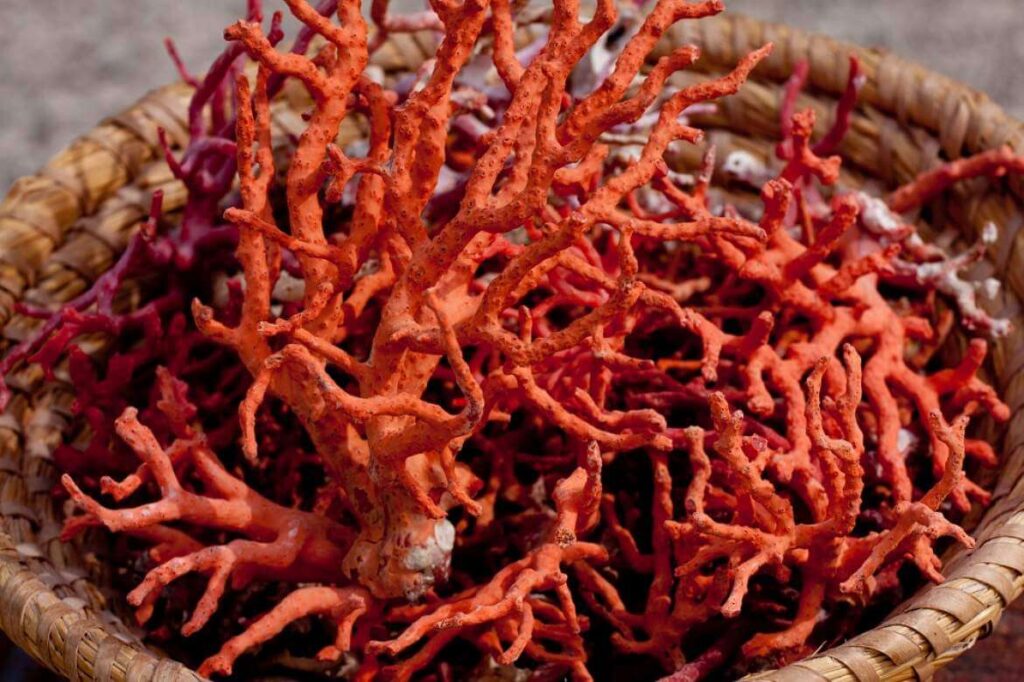
- Eco guide for Adriatic
-
by Ultra Sailing Team
Discover the unique world and nature of the Adriatic sea and try to keep it safe.
Adriatic sea is a small, enclosed sea that is inhabited by 6 to 7 thousand plant and animal species.
Even though the big diversity of wildlife is something the Adriatic is proud of, a lot of species are endangered. People forget that the marine ecosystem is closely knit together and that by destroying even one species, the delicate balance is already in big danger. Marine wildlife of the Adriatic is endangered by overfishing, destruction of habitats, ballast waters but also by new species that make Adriatic their home as it becomes warmer. Some of these species are invasive and can make permanent damage to the Adriatic world, and reduce its biodiversity.

Adriatic Sealife protection
Endangered or rare species in the Adriatic are protected by Croatian and international laws, as highly protected and protected species.
Highly protected species
Native and alien species which are in danger of extinction on Croatia territory, endemic species limited to a narrow area, species protected by international agreements.
It is forbidden to:
- deliberately hunt or keep
- deliberately damage, or destroy their procreation and resting space
- deliberately upset them, especially in time of mating, offspring nurturing, migration and hibernation
- trade, import, export, move, deal or in any way to obtain and stuff these species
Protected species
Native species which are sensitive or rare but not in danger of extinction on Croatian territory, species that are not endangered but could be mistaken with endangered species by their appearance, species protected by international agreements.
It is forbidden to:
- hunt and trade outside hunting season
- hunt small specimens i.e. smaller than minimal hunting size
- exploitation (in certain areas or time frame) to renew the population
Adriatic Sea Mammals
All sea mammals that inhabit the Adriatic or just visit occasionally, are protected by Croatian laws and international agreements. They are endangered due to human influence on their habitats, pollution, overfishing and tourism.
Every disturbing, hunting, keeping, harming, and killing of sea mammals in the Adriatic is a criminal offense which is followed by high fines and indemnities.
The Mediterranean monk seal
is highly protected and the only species of seal in the Med, and fishermen in the Adriatic lovingly call it „morski covik“ which roughly translates to “a man from the sea”. For centuries they have hunted it down for tearing up fishing nets, which made it almost extinct. Due to very rare sightings, it was even believed to be extinct. Hidden beaches and underwater caves were its habitats, and in the last few years, you can see it in the aquatorium near Cape Kamenjak and in Cres-Lošinj archipelago. This gives us hope monk seal will again become a permanent resident in the Adriatic.

What to do if you see the Mediterranean monk seal:
- Keep a distance of no less than 50 meters
- Do not disturb it in any way
- If you are on a boat, turn off the engine and wait for it to move away
- Keep away from places which you know are its habitats
You can also help by:
- reporting every sighting to Mediterranean Monk Seal Group, preferably with photos and details
- reporting if someone deliberately disturbs the animal on telephone number 112
Be sure to enjoy this rare sighting if you stumble upon it, from a safe distance of course..!
Penalties for disturbing Sea Monk:
- Penalty for disturbing Mediterranean monk seal 100.000,00 Kn
Bottlenose dolphin (Tursiops truncatus)
It is on the red list of highly protected animals. Not so long ago, dolphins were considered pests who destroy fishing nets, for which they deliberately hunted down and killed. This is why today Common dolphin (Delphinus delphis) is almost completely disappeared, which was once a regular inhabitant of the Adriatic sea.
Today the only sea mammal which is known to live and mate in the Adriatic is the bottlenose dolphin. There can be spotted in the whole of Adriatic, but the permanent population is known to reside around islands Lošinj and Cres.
Fishermen and sailors report that waters around Istria, Kornati, Hvar, and Vis are also home to the bottlenose dolphins.
Abide by the rules when in the vicinity of bottlehead dolphin!
It is truly a magnificent experience to meet a dolphin or a whale while at sea. To ensure they are not disturbed we have to follow these rules which can also be found on the webpages of the „Blue world“ Institute:
- Be slow and careful when approaching them
- When in the nearby vicinity, turn off your engine
- Don’t motor, shout, bang, etc. as this will disturb them
- Make sure there is only one vessel in the radius of 100 m, and no more than 3 in 200 m radius
- Don’t stay near them for longer than 30 min
- Do not feed the dolphins or swim with them, because it could be a dangerous situation for you
- You can help by:
- Reporting if someone deliberately disturbs the dolphins on this number: 112
- Reporting if you see a dead or hurt animal on 112, or to the „Blue world“ Institute so it can be helped
Penalties for disturbing dolphin:
- common dolphin 40.000,00 Kn
- bottlenose dolphin 35.000,00 Kn
- all other whale species that are found in the Adriatic 40.000,00 Kn
Turtles
are highly protected animals. There are 3 kinds of sea turtles that inhabit the Adriatic sea: loggerhead sea turtle, green sea turtle, and leatherback sea turtle. They are very rare and thus highly protected. Loggerhead is considered endangered, and green and leatherback sea turtle extremely endangered species. Most common in the Adriatic is the loggerhead sea turtle (Caretta caretta). Turtles live in the sea and lay their eggs on sandy beaches of the Mediterranian, rarely the Adriatic. Thousands of sea turtles gets caught in fishing nets, and a large number dies after swallowing plastic bags which they mistake for jellyfish which are their main food. Still, the greatest danger to these „silent sailors“ comes from tourism, which endangers their habitats and mating places. Also the noise, waste, and lights makes them disorientated.

You can help by:
- Reporting if you see an injured turtle by calling 112 or Marine turtles rescue center
- Reporting if some is disturbing them calling 112
Penalties for disturbing turtle:
- leatherback sea turtle 40.000,00 Kn
- loggerhead sea turtle 35.000,00 Kn
- green sea turtle 40.000,00 Kn
Fishes in the Adriatic
The Adriatic is poor with the quantity of fish but rich in a number of species. There are around 440 species. According to the Red list, as many as 123 species are endangered, and 5 species are highly endangered.
Most endangered are sharks because they have a limited number of offspring’s, they grow slowly and are overfished, which is in a great deal because of their bad image in public. Highly endangered species of fish are: the green wrasse (Labrus Viridis), seahorse (Hippocampus spp.), Adriatic sturgeon (Acipenser Naccarii), ocean sunfish (Mola mola), and they are permanently on the no fishing list.
Some economically important species like brown meager (Sciena umbra), grouper (Epinephelus spp), etc., are protected by closed seasons, minimum sizes for fishing, and catch-quotas. Fishing tools and conditions are prescribed in detail.
Fish population is endangered mainly due to habitat destruction, overfishing, pollution, disturbance, invasion of alien species, and climate change.

Seahorse
There are 2 species of seahorses living in the Adriatic. They are endangered, highly protected and gentle little fish unusually shaped, which hide among marine flowering plants and algae, holding onto them with their flexible tail. They are slow swimmers so easy prey.
What is fascinating about this species, is that the male takes care of the offspring. Female lays eggs in his stomach pouch, from where little ones are born later.

Seahorse
You can help by:
- Not buying dried up seahorses as souvenirs
- Taking or buying a photo instead
- Take care of their habitats, seabeds of marine flowering plants
- Reporting fishing and selling them by calling 112
Crabs
There are around 1500 species of crab in the Adriatic Sea. Some are tiny, live in the pelagic zone, and are food to small bluefish, some hide among rocks on the bottom or by boring in the sand, some run on the shore, and some are tightly bound to rocks. Most of these crabs are small in size and are of no economical importance, but are hunted for fun or to make souvenirs.
Bigger crabs, about 220 species, have very tasty meat and are high in demand. Because of this, they are very overhunted, and their population depleting. According to Croatia laws, crabs are protected due to excessive commercial use and habitat destruction. Some species (European spider crab, spiny lobster, common lobster, Mediterranean slipper lobster) can only be hunted by professional fishermen at certain times of the year, while some crabs are under permanent no hunting list.

Spider crab (Maja squinado)
Protected crabs are:
- European spider crab (Maja squinado)
- (Homarus Gammarus)
- Spiny lobster (Palinurus Elephas)
- Mediterranian slipper lobster (Scyllarides latus)
European spider crab (Maja squinado)- hunting prohibition 01.06.-30.11.
Common lobster (Homarus Gammarus) – hunting prohibition 10.09.-15.05.
Spiny lobster (Palinurus Elephas) – hunting prohibition 10.09.-15.05.
Mediterranian slipper lobster (Scyllarides latus) – hunting prohibition 10.09.-15.05.
You can help by:
- Reporting unlawful hunting and sale by calling 112
- Do not take crabs out of their habitat as they are best studied in their natural environment
Shellfish
There are around 240 species of shellfish in the Adriatic. Most of them live by the shore and at smaller depths, attached to rocks or burrowed in the sand, which makes it easy to collect them only by hand, with no special tools. Unfortunately, this makes them easy prey, so they are overhunted due to their tasty meat or nice looking shell which is often kept as a souvenir.

Date mussels (Lithophaga lithophaga)
Highly protected shellfish are:
- Common piddock (Pholas Dactylus)
- Date shell (Lithophaga Lithophaga)
- Fan mussel (Atrina Fragilis)
- Noble pen shell (Pinna Nobilis)
Noble pen shell is the biggest shellfish in the Adriatic and Mediterranean, that can grow up to 1 meter in size. It lives burrowed in the sandy seabed, at 2-30 meters. It is also often found among marine flowering plants. Interesting fact: it can contain pearls.
Beautiful and big shell is often wanted as a souvenir, so people are known to thoughtlessly take it out of the sea. It is very scarce in popular tourist places. This shell is protected in the Adriatic and Mediterranean, so it is strictly prohibited to obtain and sell them.
You can help by:
- Not taking pen shells out
- Reporting hunting and selling them by calling 112
Date shell (Lithophaga lithophaga)
Date shell lives and grows by the boring rocky seashore. It is overhunted due to its delicious meat. It takes about 50-60 years to reach 7-8 cm, and also it need to crush rocks to get to it, which irreparably devastates the shore line. This is why date shell is highly protected in Croatia, and hunting and selling is strictly prohibited.

Noble pen mussel (Pinna nobilis)
You can help by:
- Not hunting date shells
- Refuse to eat date shells offered to you in a restaurant or on the black market
- Reporting hunting and selling by calling 112
Snails
There are around 800 species of snails in the Adriatic. They can be found right at the shoreline, at small depths, but also much deeper. Usually, they are not intended for consummating, so they are not hunted commercially. In spite of this, some snail species are endangered because of accidental catching or taking them out to be souvenirs or part of collections as they have pretty shells.
Highly protected snail species and penalty are:
- Zoned mitre (Mitra Zonata) 8.000,00 Kn
- Triton’s trumpet (Charonia Tritonis) 4.000,00 Kn
- Charonia lampas
- Giant tun (Tonna galea) 1.000,00 Kn
- Luria Lurida
- Pear cowry (Zonaria Pyrum)
- Dirty cowry (Erosaria Spurca)
- Wandering Triton (Ranella olearia)
Zoned mitre (Mitra zonata)
This snail with a spindle-shaped shell is about 10 cm big and lives at the depth of 20-85 m on the entire Adriatic shore, but it is very rare.
Triton’s trumphet (Charonia Tritonis)
Triton’s trumphet is the largest snail in the Adriatic that can grow up to 40 cm. It lives at the depths of about 50 m all along the coast, but it is very rare.
Giant snail (Tonna galea)
Giant tun is a big snail that can weigh up to 1.5 kg, and lives from 10 to 150 m depth in central and south Adriatic. Unfortunately, it gets caught up in trawler nets.
Poaching fines:
- Triton’s trumphet 4.000,00 kn
- giant tun 1.000,00 kn
- zoned mitre 8.000,00 kn
- noble pen shell 500,00 kn
- date shell 50,00 kn/piece
Hinoderms
Adriatic echinoderm is a very diverse group of organisms which include starfishes, sea cucumbers, and sea urchins.
Starfish
Starfishes are marine organisms with a characteristic stellar shape with 5 or more rays. Though mostly found in the shallow, there can be seen in deeper waters too. They are one of the most famous representatives of the sea, they are often hunted for souvenirs. Two species of starfish are highly protected in the Adriatic. Extremely rare Asterina Panceri adorned meadows of Posidonia with its bright colors.
Purple seastar comes in different colors, from orange to, you guessed it, purple. It inhabits rocky bottoms, up to 25 m depth.
Highly protected
Asterina Panceri
Purple seastar (Ophidiaster Ophidianus)
Sea Cucumbers
There are 36 species of sea cucumbers living in the Adriatic. They live on the sea bottom, lying still, crawling, or boring in the sediment. All species are protected today as they were overhunted during the nineties to be sold on the far east market, which resulted in a significant decrease in numbers.
The most common kind is the tubular sea cucumber (Holothuria Tubulosa) which lives all along the coast, from shallow waters to 100-meter depths.
Sea Urchins
There are about 20 species of sea urchins living in the Adriatic. They are mostly round in shape and covered with spines. There are 2 protected species, one of them being purple sea urchin (Paracentrotus Lividus). It is usually found just below the low water mark, on rocky bottoms, with depths varying from 6 to 30 meters. Its gonads are considered a delicacy so to avoid and stop overhunting and destruction of habitat it is protected now.

You can help by:
- Leaving starfish, sea cucumbers, and sea urchins alone
- Not buying dried up specimens as souvenirs
- Reporting if someone hunts them and/or sells them, by calling 112
Cnidaria
Members of the Cnidaria phylum are one of the most diverse organisms in the sea, that come in many different shapes and colors. Their use cnidocytes for attaching to surfaces, defense, and for paralyzing and hunting prey. Cnidaria species are divided into 3 orders:
(Hydrozoa), true jellyfish (Scyphoza) i corals (Anthozoa).
Of all the Cnydaria in the Adriatic only some of 116 corals are protected (5 highly protected, and 14 protected). The beauty of the shape and color of the corals is best experienced underwater. Unfortunately, these sea decorations are often taken as a souvenir. On land, the grandiose beauty of these animals is mostly lost.
Red coral (Corallium Rubrum)
Red coral is a highly appreciated and famous Adriatic coral, which is processed and turned into jewelry of unique beauty. Its name derives from the Greek word “Coraline” which means “daughter of the sea“.
Coral harvesting has a long tradition on the Adriatic. It has been done on the island of Zlarin since the 13th century. At the end of the 19th-century divers who would take out the corals did this by using heavy and insufficient equipment which often resulted in accidents. Coral harvesters were sent out to work with concern by the whole island, and church walls in Zlarin are filled with gold and red coral branches that sailors left as a sign of their commitment.
Even though red coral is protected today and can be harvested only with a special permit, its habitat is almost all gone, mostly due to illegal harvesting.

Place in Zlarin with permitted Coral jewelry
Gorgonia
Unlike corals with a hard skeleton, gorgonians (genus Eunicella and Paramuricea), are corals with a soft skeleton. They look like sea trees of bright colors. They can be yellow, red, blue, and purple, up to 1 meter in diameter. They live on rocky bottoms at bigger depths so are mostly enjoyed by divers. Gorgonia is not protected, but are endangered by reckless divers who take them as souvenirs.
You can help by:
- Reporting someone is ripping out or damaging protected and highly protected species of corals, by calling 112
- Reporting unauthorized harvesting and selling of corals, by calling 112
- Not buying souvenirs made from corals
- Not buying coral jewelry without the appropriate certificate i.e. confirmation of how and when it was harvested
- Not harvesting gorgonia as souvenirs
Highly protected:
- Split-pore black coral (Antipathes Dichotoma)
- Mediterranian black coral (Antipathes Mediterranea)
- Black coral (Antipathes Subpinnata)
- Orange coral (Astroides Calycularis)
- Gold coral (Gerardia savaglia)
Protected:
- Red coral (Corallium Rubrum)
- Cushion coral (Cladocora caespitosa)

Purple sea urchin
Sponges
Sponges are sessile marina animals who inhabit both shallow and deep waters. There are about 200 species, out of which 11 are highly protected. Some of them stand out with beauty and shape. They fall victim to reckless divers who, disappointed at their appearance on dry land, just discard them. Their beauty is truly shown only in their own natural underwater habitat.
You can help by:
Reporting if someone is ripping out, harvesting, or selling highly protected types of sponges, by calling 112
Highly protected:
- Geodia cydonium encrusting sea sponge
- Tethya spp. Orange sponge
- Glass sponge
- Yellow cage sponge
Dalmata fina (Euspongia Officinalis Adriatica) and elephant’s ear (Euspongia Officinalis lamella) are what we call here „good sponges“, which are harvested and processed into a very famous and quality product – natural sponge. You can find it in any souvenir shop along the coast. Sponge harvesting is tied mostly to the island of Krapanj, ever since the 16th century. You can even participate in sponge harvesting on Krapanj, you just need to contact their local Tourist board, as they can only be harvested with special permits and licensed divers.
Algae
There is a great number of brown, green, and red algae living in the Adriatic. Some of them are highly protected and live in the wave splashing zone or shallow waters, easily seen. About 20 species of algae are highly protected, among them the Adriatic fucus (Fucus virsoides), species of Cystoseira (Cystoseira spp.), and some species of Coralline algae (Lithophyllum spp.).
Seashore devastation endangered not only algae but numerous other animal species who feed of and live on algae.
- Adriatic fucus (Fucus virsoides)
- cystoseira (Cystoseira spp.)
- Coralline algae (Lithophyllum spp.
You can help by:
- Leaving alone and not touching algae
- Reporting is someone is ripping them out or damaging them, by calling 112
Marine flowering plants
There are 4 species of highly protected marine flowering plants living in the Adriatic which form large underwater meadows. Posidonia Oceanica (Neptune grass) form the largest surfaces at the depths of about 35 meters. Other species can be found at smaller depths and are rarer. Meadows of marine flowering plants are places of high biodiversity. One of the most important characteristics is that they are habitats, hiding, and mating places for many marine organisms, so by destroying them we directly make adverse effects on those organisms.
Meadows of Posidonia are called „lungs of the sea“ as they enrich it with oxygen. They are especially threatened by nautical tourism and boaters who plow through these meadows with their anchors. Another threat comes from fishing dragging nets, excessive shore building, raising fish in pens, and pollution.
With boaters’ help, some alien invasive species have made it into the Adriatic, Caulerpa Taxifolia and Caulerpa Racemosa, who are in direct conflict with Posidonia for habitat. As Posidonia meadows take an extremely long time to grow, a few square feet of a destroyed meadow will not renew itself in the span of a human lifetime.
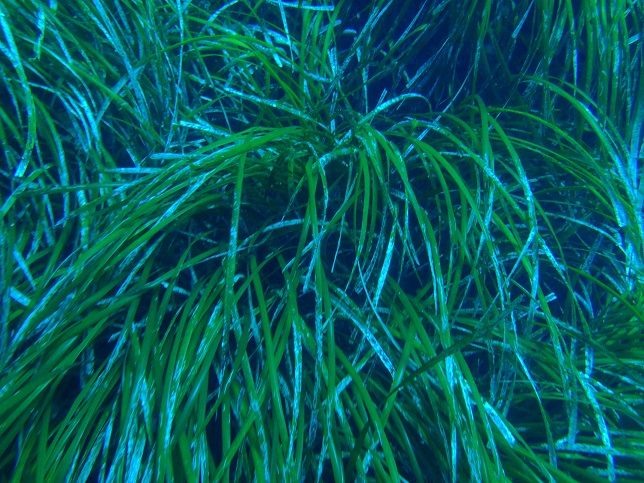
Highly protected
- Cymodocea nodosa
- Posidonia Oceanica – Neptune grass
- Zostera marina – common eelgrass
- Zostera Noltii – dwarf eelgrass
You can help by:
- Avoiding anchoring in the area where there are meadows of marine flowering plants Avoiding anchoring to minimize the spreading of alien invasive algae, Caulerpe
- Choosing a buoy or mooring in a marina instead of an anchor
This text is protected by Copyright. Without the express written consent of the copyright holders reproduction; distribution, modification, re-transmission, or publication of the Copyrighted material is strictly prohibited and it constitutes as a crime according to the Criminal Law of the Republic of Croatia, as well as it is the foundation for the process of compensation in accordance with applicable regulations of the Croatian Law.



